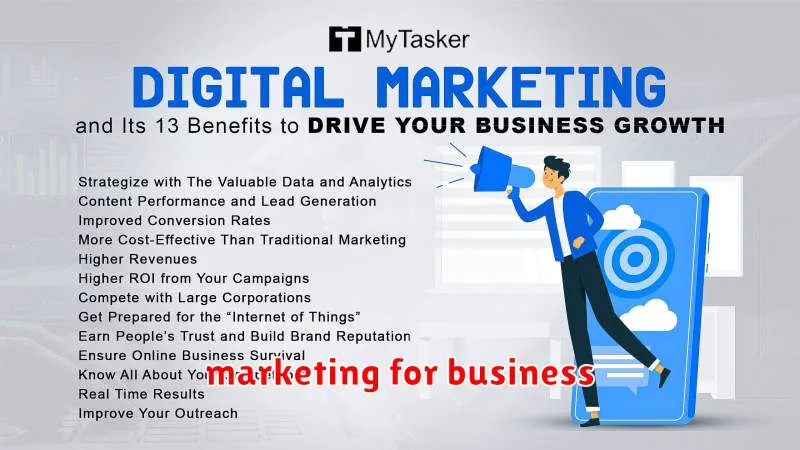Are you struggling to gain online visibility for your business? In today’s digital landscape, a strong online presence is crucial for success. This article explores effective digital marketing strategies to significantly boost your online visibility, driving more traffic to your website and increasing brand awareness. We’ll cover essential techniques including search engine optimization (SEO), social media marketing, pay-per-click (PPC) advertising, and content marketing, providing actionable insights to help you achieve greater online success and reach your target audience. Learn how to leverage these powerful strategies to improve your brand visibility and ultimately, achieve your business goals.
The Basics of Digital Marketing for Beginners
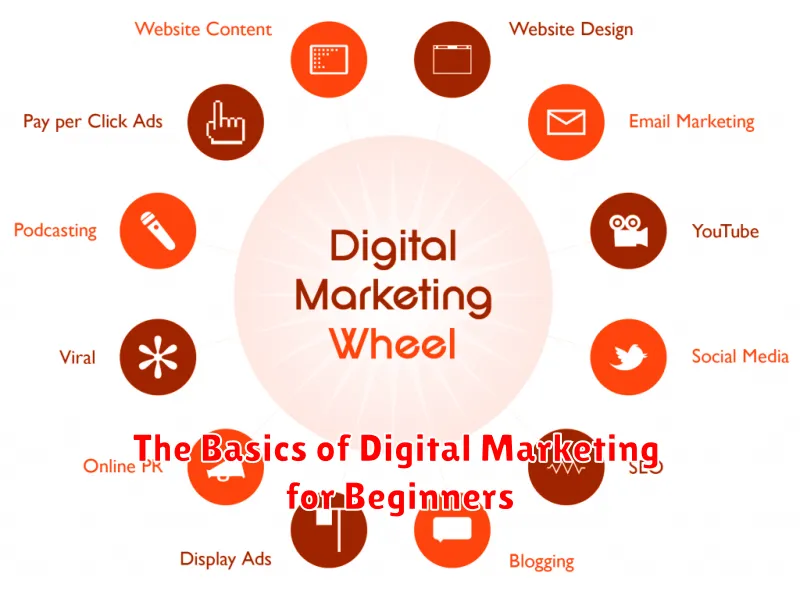
Digital marketing encompasses various strategies to promote products or services online. Understanding the fundamentals is crucial for success. Search Engine Optimization (SEO) focuses on improving your website’s ranking in search engine results pages (SERPs) organically. This involves optimizing website content, structure, and technical aspects to attract more organic traffic.
Pay-Per-Click (PPC) advertising involves paying for ads to appear at the top of search engine results or on social media platforms. This is a fast way to reach a target audience, with costs varying depending on campaign goals and competition.
Social media marketing leverages social platforms to engage with potential customers. This includes creating engaging content, running contests, and utilizing paid social media advertising to increase brand awareness and drive traffic to your website. Content marketing involves creating valuable and relevant content (blog posts, videos, infographics) to attract and retain a clearly defined audience — and, ultimately, to drive profitable customer action.
Email marketing is a powerful tool for nurturing leads and building relationships with customers. Well-crafted email campaigns can promote new products, announce special offers, and foster customer loyalty. Finally, analytics are vital to track campaign performance, measure ROI, and make data-driven decisions for optimization.
Understanding SEO and Its Role in Visibility
Search Engine Optimization (SEO) is crucial for boosting online visibility. It involves optimizing your website to rank higher in search engine results pages (SERPs). The higher your ranking, the more likely people are to find your website organically (without paid advertising).
SEO strategies encompass various techniques, including keyword research, on-page optimization (improving website content and structure), and off-page optimization (building backlinks from other reputable websites). By implementing effective SEO, you increase the chances of your website appearing prominently in relevant searches, driving more organic traffic and improving overall visibility.
Understanding user intent is key to successful SEO. Search engines aim to provide users with the most relevant results, so focusing on creating high-quality, informative content that addresses user needs is paramount. This includes utilizing relevant keywords naturally within your content and structuring it in a user-friendly manner.
Measuring SEO success involves tracking key metrics such as website traffic, keyword rankings, and conversion rates. This data provides valuable insights into the effectiveness of your SEO efforts and allows for continuous optimization and improvement.
How to Use Social Media to Reach Your Audience
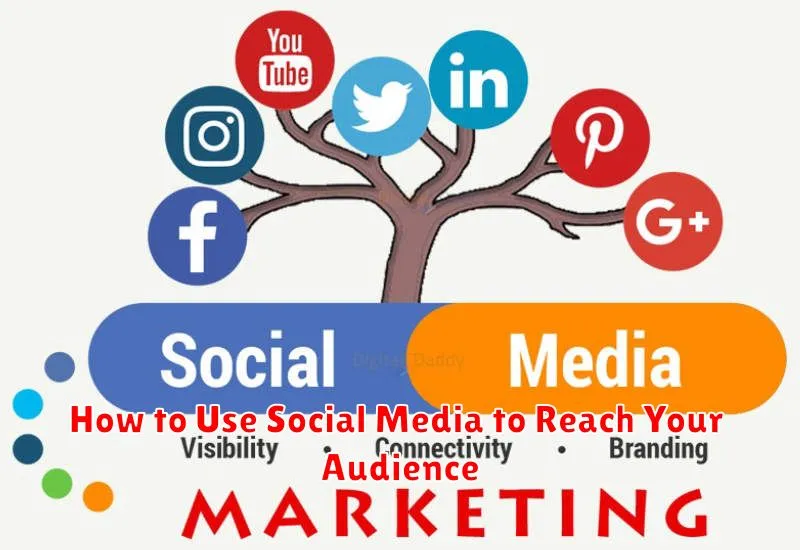
Social media offers a powerful way to connect with your target audience. Understanding your audience is crucial; research their demographics, interests, and online behavior to determine which platforms they frequent most.
Once you’ve identified the right platforms (e.g., Facebook, Instagram, Twitter, LinkedIn, TikTok), create engaging content tailored to each. Use a consistent brand voice and visual style across all channels for brand recognition.
High-quality content is key. Share a mix of informative, entertaining, and visually appealing posts, including images, videos, and stories. Engage with your audience by responding to comments and messages promptly.
Utilize social media advertising to expand your reach. Targeted ads allow you to reach specific demographics and interests, maximizing your budget’s impact. Track your results using analytics to optimize your strategy over time.
Finally, remember that consistency is paramount. Regular posting keeps your audience engaged and increases your visibility in their feeds. Don’t be afraid to experiment with different content formats and posting times to find what works best.
The Power of Email Marketing Campaigns
Email marketing remains a powerful tool for boosting online visibility. It allows for direct communication with your target audience, fostering a personal connection that other digital marketing strategies often lack.
Targeted campaigns, segmented by demographics or behavior, ensure your message reaches the right people at the right time. This increases engagement and conversion rates significantly.
Email marketing provides opportunities for lead nurturing and relationship building. By consistently providing valuable content, you can establish trust and loyalty, turning subscribers into repeat customers.
Measurable results are a key advantage. Email marketing platforms offer detailed analytics, allowing you to track open rates, click-through rates, and conversions, providing valuable insights for optimizing future campaigns.
Ultimately, a well-executed email marketing strategy can significantly contribute to increased brand awareness, website traffic, and sales, ultimately boosting your online visibility.
Pay-Per-Click Advertising Strategies
Pay-per-click (PPC) advertising, a core component of digital marketing, offers significant potential for boosting online visibility. Effective PPC strategies require careful planning and execution.
Keyword research is paramount. Identify relevant keywords with high search volume and low competition. Utilize tools to analyze search trends and competitor strategies. Targeting your ads appropriately is crucial; consider location, demographics, and interests to maximize reach and relevance.
Ad copywriting is key to attracting clicks. Craft compelling headlines and descriptions that highlight unique selling propositions and encourage immediate action. A/B testing different ad variations helps optimize performance and improve click-through rates.
Landing page optimization is crucial for converting clicks into conversions. Ensure your landing page is relevant to the ad copy and offers a seamless user experience. Tracking and analysis of key performance indicators (KPIs) such as click-through rate (CTR), conversion rate, and return on ad spend (ROAS) are essential for ongoing optimization and maximizing ROI.
Budget management is vital. Allocate your budget strategically across different campaigns and keywords, adjusting bids based on performance data. Regular monitoring and adjustments are necessary to ensure optimal resource allocation.
Finally, consider utilizing advanced PPC features offered by platforms like Google Ads and Bing Ads, such as remarketing, negative keywords, and automated bidding strategies, to further refine your campaigns and improve efficiency.
Content Marketing for Long-Term Growth
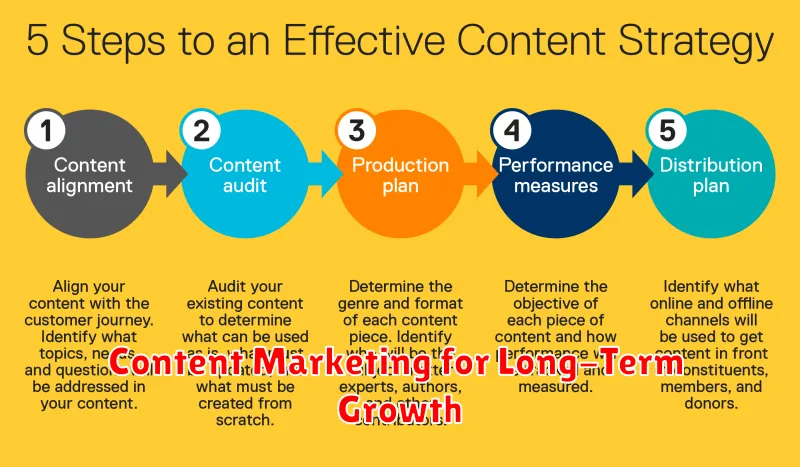
Content marketing is a cornerstone of long-term digital growth. Unlike short-term tactics, it focuses on building valuable, consistent content that attracts and engages your target audience over time.
By creating high-quality content – such as blog posts, infographics, videos, and ebooks – you establish yourself as a thought leader in your industry. This builds trust and credibility with potential customers.
A consistent content calendar ensures regular publication, keeping your audience engaged and search engines updated. This leads to improved search engine rankings (SEO), increased website traffic, and ultimately, higher conversion rates.
Measuring your results through analytics is crucial. Track key metrics like website traffic, engagement, and lead generation to optimize your content strategy for maximum impact and sustained growth.
Analyzing and Tracking Marketing Campaigns
Effective digital marketing hinges on accurate analysis and consistent tracking of marketing campaigns. This allows for data-driven decision-making and optimization.
Key Performance Indicators (KPIs) such as website traffic, conversion rates, cost per acquisition (CPA), and return on investment (ROI) are crucial to monitor. Regularly reviewing these metrics reveals campaign performance and identifies areas needing improvement.
Utilizing analytics tools like Google Analytics and social media platform analytics is essential. These tools provide detailed insights into audience behavior, campaign effectiveness, and areas for refinement. Analyzing user demographics, engagement metrics, and website bounce rates helps understand audience preferences and tailor campaigns accordingly.
A/B testing is vital for optimizing campaign elements like headlines, calls to action, and visuals. By comparing different variations, marketers can determine which strategies perform best and improve overall campaign efficiency.
Regular reporting on campaign performance, including both successes and failures, is crucial for informing future strategies. This data-driven approach ensures continuous improvement and allows for more effective resource allocation.
How to Optimize for Better Conversions
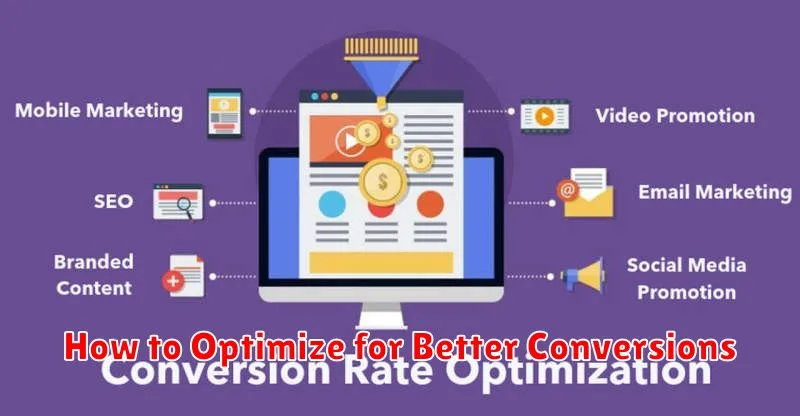
Optimizing for better conversions involves strategically improving your website and marketing efforts to encourage more visitors to take a desired action, such as making a purchase or signing up for a newsletter. This requires a multi-faceted approach.
Clear Call to Actions (CTAs): Use strong, concise CTAs that clearly tell users what you want them to do. Make them visually prominent using contrasting colors and compelling language.
User Experience (UX): A seamless and intuitive user experience is crucial. Ensure your website is easy to navigate, loads quickly, and is mobile-friendly. A frustrating experience will drive visitors away.
Targeted Content: Create content that speaks directly to your target audience’s needs and pain points. Use keywords effectively to attract organic traffic and address their specific search queries.
A/B Testing: Continuously test different elements of your website and marketing campaigns, such as headlines, images, and CTA button text, to see what resonates best with your audience and improves conversion rates.
Lead Magnets: Offer valuable incentives, such as ebooks, webinars, or discounts, in exchange for contact information. This helps nurture leads and build your email list.
Landing Page Optimization: Ensure your landing pages are specifically designed to convert visitors. They should be focused on a single objective and have a clear, compelling message that aligns with the advertising campaign leading to them.
By focusing on these key optimization strategies, you can significantly improve your conversion rates and achieve a higher return on your digital marketing investment.

